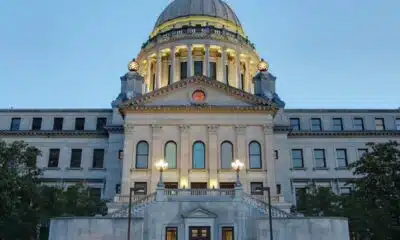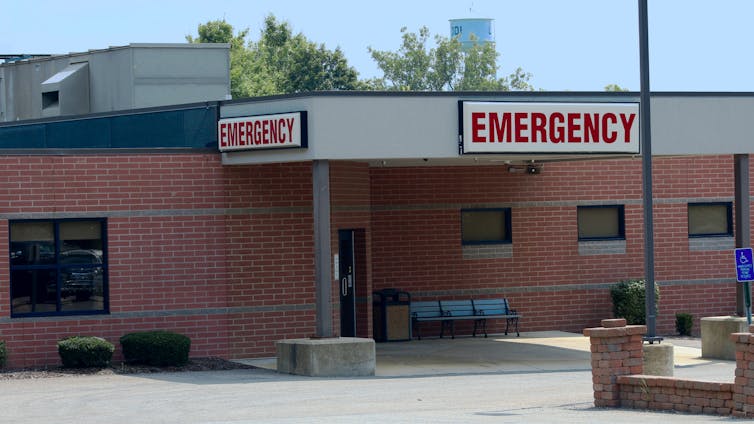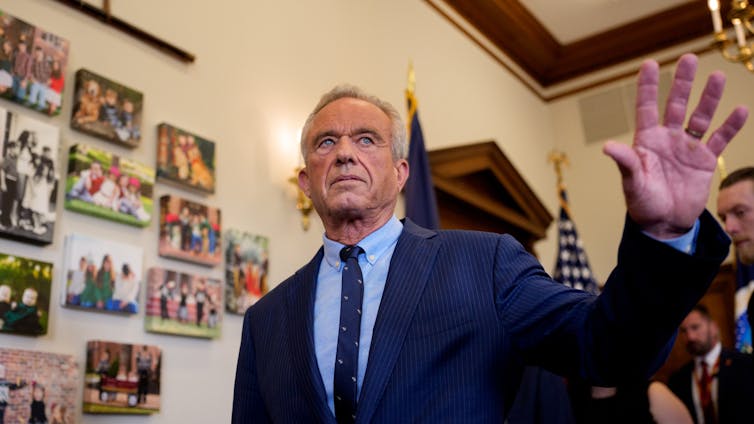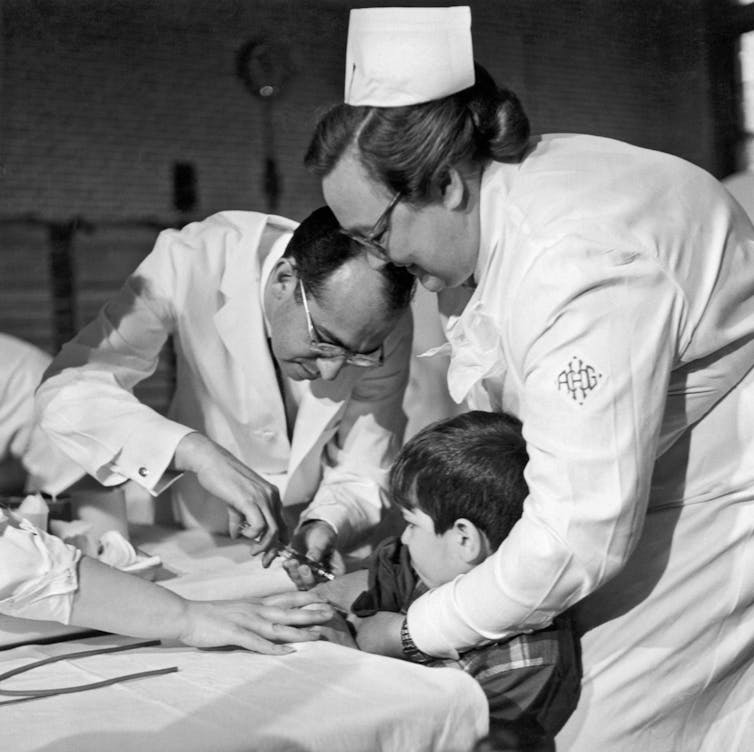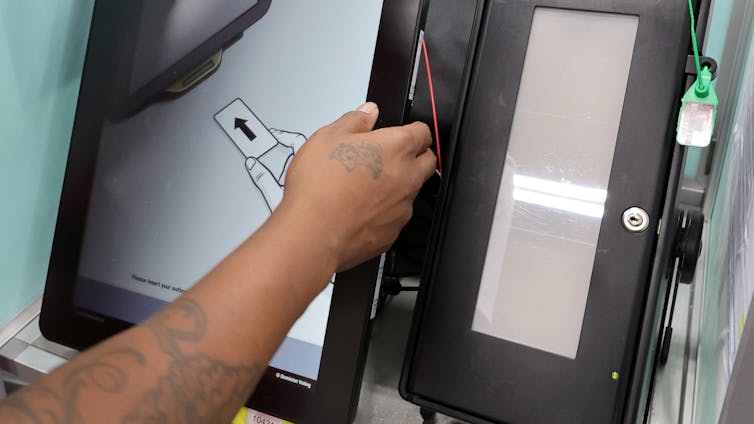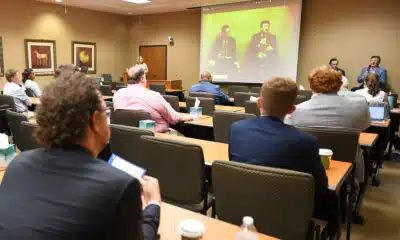Maha Nassar, University of Arizona
Just two days after a shaky ceasefire took hold in the Gaza Strip, Israel on Jan. 21, 2025, launched a large-scale incursion of the Jenin refugee camp in the West Bank.
Soldiers raided hundreds of homes in the West Bank city in what the Israeli military called a “counterterrorism” operation, aiming to reassert control there. Many analysts have suggested the raid is an attempt by Israeli Prime Minister Benjamin Netanyahu to appease far-right members of his coalition who oppose the ceasefire deal.
Whatever the motive, the offensive has been devastating for many of the camp’s residents. The Israeli military has destroyed infrastructure, closed entrances to local hospitals and forcibly displaced about 2,000 families, according to reports on the raids. As it was, life for inhabitants of the densely populated camp – home to some 24,000 Palestinian refugees – was hard. The West Bank director of UNRWA, the U.N. agency overseeing refugees, recently described camp conditions as “nearly uninhabitable.”
The focus of the latest Israeli operation is not new. The Jenin refugee camp, on the western edge of the town of Jenin in the north of the occupied West Bank, has often experienced violence between Israeli soldiers and Palestinian militants.
That violence has escalated since the Oct. 7, 2023, attacks, when Hamas gunmen led an incursion into Israel in which around 1,200 people were killed. The camp has faced repeated large-scale military operations by Israeli forces, including drone strikes, ground raids, and airstrikes that have caused widespread destruction. Meanwhile, Israeli settlers have torched Palestinian cars and properties, with 64 such attacks in the Jenin area alone since Oct. 7, 2023. Last December, the Palestinian Authority, which coordinates with Israel to oversee security in parts of the West Bank, also attacked local militants.
These events have deepened political tensions and worsened the economic and humanitarian crises in the West Bank. According to the U.N., more than a quarter of the 800-plus Palestinians killed in the West Bank since Oct. 7 attack have come from the Jenin district; several Israeli civilians have also been killed in the West Bank during the same period.
As a scholar of Palestinian history, I see this recent episode as the latest chapter in a much longer history of Palestinian displacement and defiance of Israeli occupation. Understanding this history helps explain why the Jenin camp in particular has become a target of Israeli offensives and a center of Palestinian militant resistance.
Camp conditions
Jenin, an agricultural town that dates back to ancient times, has long been a center of Palestinian resistance. During the 1948 Arab-Israeli War, Arab fighters successfully pushed back Israeli attempts to capture the town.
At the end of that war, the town became a refuge for some of the hundreds of thousands of Palestinian refugees who fled or were expelled from lands that became part of Israel. Jenin, along with the hilly interior of Palestine known as the West Bank, was annexed by Jordan.
The U.N. Relief and Works Agency established the Jenin camp in 1953, just west of the city. Since then, the agency has provided basic services to the camp’s residents, including food, housing and education.
Camp conditions have always been difficult. In the early years of the camp, refugees had to stand in long lines to receive food rations, and for decades their cramped homes lacked electricity or running water.
The Jenin camp soon became the poorest and most densely populated of the West Bank’s 19 refugee camps. And given its location near the “Green Line” – the armistice line that serves as Israel’s de facto border – camp residents who were expelled from northern Palestine could actually see the homes and villages from which they were expelled. But they were prevented from returning to them.
The rise of militancy
Since 1967, Jenin, along with the rest of the West Bank, has been occupied by the Israeli military.
The Israeli occupation of Jenin compounded the difficulties of these refugees. As stateless Palestinians, they couldn’t return home. But under Israeli occupation, they couldn’t live freely in Jenin, either. Human rights groups have long documented what has been described as “systematic oppression,” which includes discriminatory land seizures, forced evictions and travel restrictions.
Seeing no other path forward, many of the camp’s young refugees turned to armed resistance.
In the 1980s, groups such as the Black Panthers, which was affiliated with the Palestinian nationalist Fatah organization, launched attacks on Israeli targets in an effort to end the occupation and liberate their ancestral lands. Throughout the first intifada – a Palestinian uprising lasting from 1987 to 1993 – the Israeli army raided the Jenin camp many times, seeking to arrest members of militant groups. In the process, Israeli forces also sometimes demolished family members’ homes and arrested relatives. Such acts of apparent collective punishment reinforced the idea for many Palestinians that the Israeli occupation could only be ended by force.

Esaias Baitel/Gamma-Rapho via Getty Images)
The Oslo peace process of the 1990s – which consisted of a series of meetings between Israeli government and Palestinian representatives – led some former militants to hope that the occupation could be ended through negotiations instead. But Jenin’s camp residents remained marginalized in the West Bank and sealed off from Israel, seeing little improvement in their lives, even after the transfer of administrative powers from Israel to the Palestinian Authority in 1995.
Independent projects like the The Freedom Theatre provided some relief to the camp’s refugee children, but it was not enough to overcome the grinding poverty or the violence they faced from Israeli soldiers and settlers. By the time the second intifada broke out in 2000, many of the camp’s teenagers joined militant groups. That included Freedom Theatre co-founder Zakaria Zubeidi, who joined the Fatah-affiliated Al-Aqsa Martyrs Brigade. Like the youth of the 1980s, they, too, concluded that only armed resistance would bring an end to the occupation.
A cycle of violence?
In April 2002, the Israeli army invaded the Jenin camp, hoping to put an end to such armed groups. There were fierce clashes between Israeli soldiers and young Palestinian men in the camp, solidifying Jenin’s reputation among Palestinians as “the capital of the resistance.”
The lack of progress on peace talks since then, Israel’s settlement building on occupied land – deemed illegal under international law – and the inclusion of hard-line Israeli politicians in the government have exacerbated resentment in the camp. Polls show Palestinians increasingly support armed resistance.
Seeking to protect the camp from Israeli incursions, in 2021 a group of local residents formed the Jenin Brigades. While its founder was affiliated with Palestinian Islamic Jihad, the group quickly drew in militants from various political factions. Members acquired weapons, patrolled the streets and fought off Israeli military incursions. By 2022, they had declared parts of the camp to be “liberated” from the Israeli occupation.
Seemingly alarmed by the increase in militancy and the stockpiling of weapons in the camp, Israel dramatically stepped up its raids in 2022. It was during such a raid that Palestinian American journalist Shireen Abu Akleh was killed by an Israeli soldier.
On July 3, 2023, the Israeli military again invaded Jenin, withdrawing after two days of heavy aerial bombardment and a ground invasion that killed 12 Palestinians and wounded over 100.
The latest offensive could well surpass that death toll, with at least 10 killed in the first day of fighting. But the militancy associated with the camp was built on decades of resistance and defiance to occupation that Israel has had little success in extinguishing. Similarly this time, I believe, such militancy within the camp will only increase with the latest deaths and destruction.
This article is an updated version of a story that was first published by The Conversation on July 5, 2023.
Maha Nassar, Associate Professor in the School of Middle Eastern and North African Studies, University of Arizona
This article is republished from The Conversation under a Creative Commons license. Read the original article.













